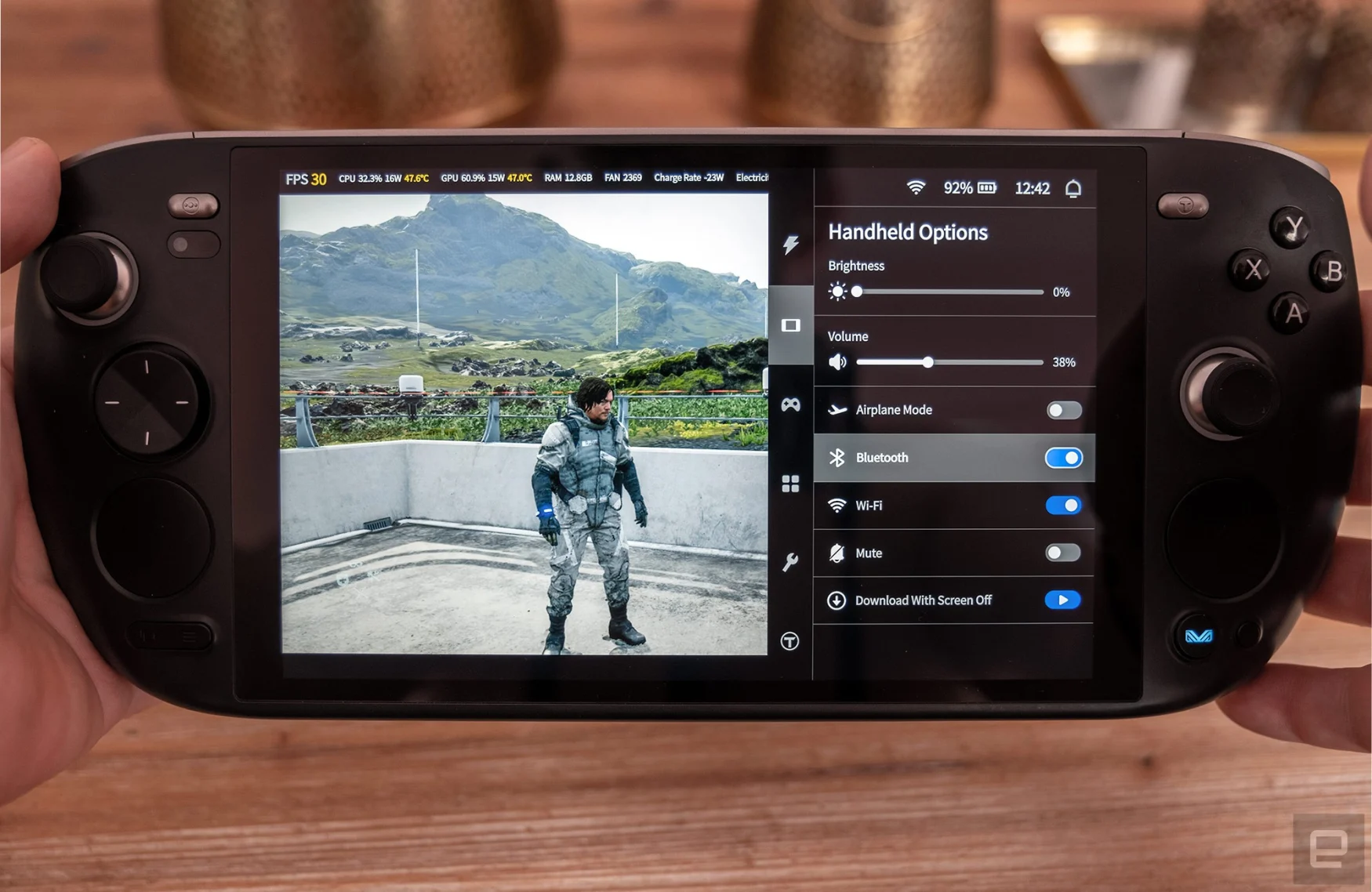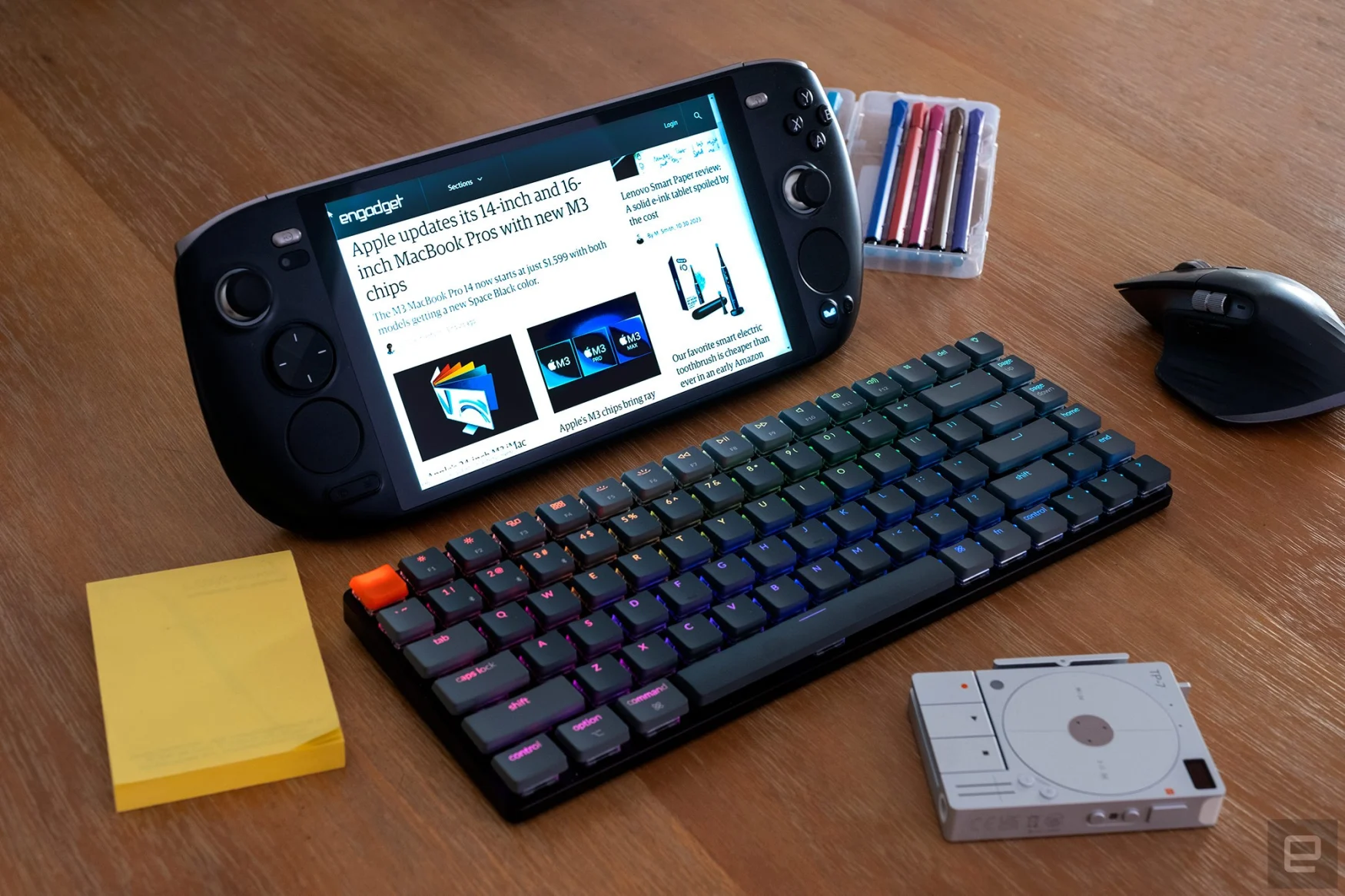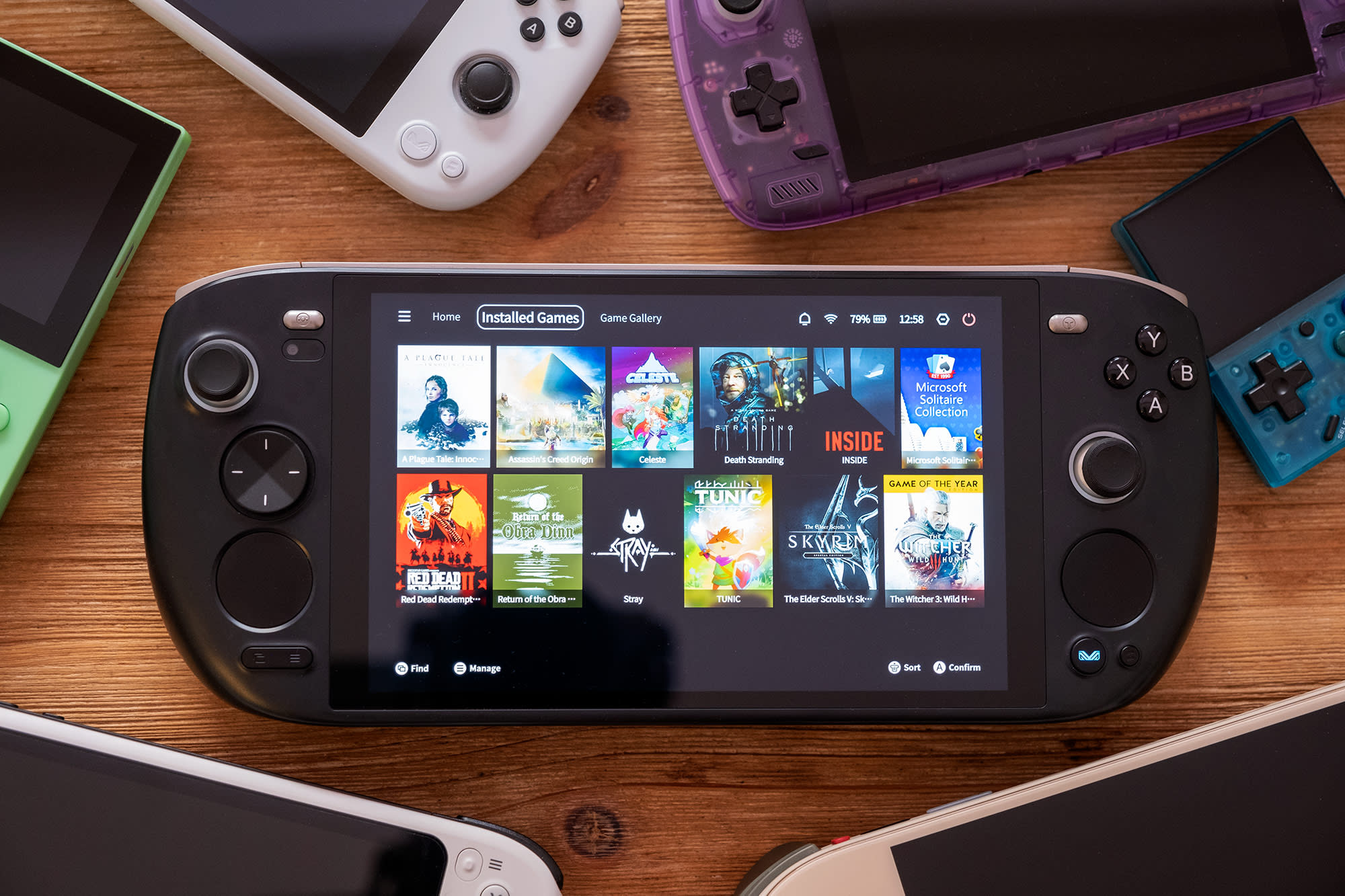Thirteen. That’s the number of different handheld gaming PCs that Ayaneo shows on its homepage as of this writing. Fourteen if you count the preview for one in the carousel. Each device comes in a choice of colors with different storage and RAM configurations. Ayaneo has a lot of SKUs. Only five months ago I reviewed the Air Plus and it’s already been discounted to make way for the next version. The current tippy-top of all these handhelds is the Ayaneo Kun and it is, currently, one of a kind.
The Kun is the highest-spec machine the company has ever made, and after using it for a couple of weeks I can say it’s both a fantastic gaming handheld and (if you want) a decent portable general-use PC. But despite being the latest and greatest, it didn’t take long for one thing to become abundantly clear: The Kun is just a placeholder for the Kun 2, or the Kun 1S, Kun Pro or… whatever they call the beefier, updated version that’s waiting for the next generation of processors. We’ll get to why in a bit, but for now, it’s the most impressive console the company has made.

With an 8.4-inch display, the latest AMD Ryzen 7 7840U processor, and up to 64GB of RAM and 4TB of storage the Kun kicks digital sand in the face of the anemic-by-comparison Steam Deck. Physically, it’s a shade taller and, at two pounds (900g), a (double) handful. But with Valve’s portable approaching its second birthday, it’s starting to make less sense to measure the current wave of gaming portables against it. That said, just one look at the Kun, with its familiar-looking trackpads and rear buttons, and it’s clear how it’s been influenced by the market-leading device .
Before we talk about how all that hardware performs, or the software experience, we should talk about price. The fully loaded Kun I’ve been testing costs an eye-watering $1,700. That’s enough money for a good desktop gaming PC, including the monitor. It’s also enough to buy two top of the line Steam Decks with change (or two high-end ROG Allys). A better comparison is the lowest-spec Kun, as that matches the RAM and storage (16GB / 512 GB) of the high-end Deck ($649), and that model costs a slightly more reasonable $999. You can add another $200 or so to those Kun prices if you purchase outside of the IGG campaign, but Ayaneo tends to leave them going long enough for anyone who wants one to get the better price.
While the Kun is new, there’s a lot we’ve seen before. The Ayaneo 2S shares the same 7840U processor and graphics chip. But in terms of performance, you might reasonably expect the Kun to be a shade worse, as that 8.4-inch display allows 1600p gaming which is more intensive than the 1200p max of the Ayaneo 2 or 2S. The reality, however, is that while you can play games at higher resolutions, it’s usually not worth it for the hit on performance. That’s where the other important hardware difference on the Kun comes in: the huge 75Wh battery.

When playing games at 1080p or 1200p everything still looks fantastic. That display is bright, has excellent dynamic range and just really brings games to life. The pairing of optimized graphics settings and the bigger battery translates to much longer play sessions. Exactly how long will depend on a few variables along with the maximum power drain/TDP that you specify in the Ayaspace software. But as a broad guide, for lighter games and things like retro emulation you should be able to crack five hours. For a lot of AAA games, you can expect over three hours of 1080p play (assuming a TDP of between 15 and 20). If you want to increase the resolution to either 1200 or 1600 and increase the TDP nearer 30 then you might eke out two hours if you’re lucky.
Those times are pretty good for this current generation of Windows handhelds, but there are other factors to consider. The Kun is a foot wide and a little hefty. Sure, you can take this thing places but you will not be sliding it out of a pocket while waiting at the DMV. The Kun lives to be played, unironically, at home — or someone else’s home, or maybe on a flight or long train ride. The size and weight aren’t problematic in these controlled, indoor environments, but you’ll want to be somewhere relatively comfortable or ergonomic. There’s a kickstand, which really helps with certain types of games, but it positions the Kun upright like a laptop screen. I do wish the stand were adjustable to allow for a variety of angles, but it’s better than nothing.

Personally, I found myself playing with it while on the couch, grabbing an hour or so of game time between work and dinner. For extended sessions, I would dock it and play through the TV. This hybrid use case seems to be where the Kun excels. You don’t need to occupy the living room’s main screen, but you can still be around friends or family. And then when you really want to get into a game, playing through the TV is where the Kun’s higher 54W max power drain / TDP can come in handy.
Here is a good time to circle back to something I alluded to right up top. That 54W max TDP is really, really high compared to the Steam Deck’s 15W highest power setting. It’s also a lot higher than even the Ayaneo 2S’ 30W limit. But right now that doesn’t translate into much extra game performance. The GPU on this device will be the bottleneck, usually reaching 100 percent long before you reach anything near 54W of power. Sadly, jacking the power up to 54W once the GPU is already running at maximum won’t change anything. But what it can help with is two fold.

Firstly, it allows for more CPU intensive tasks like general computing. Want to run music making software on this thing? You definitely could. Have the urge to edit video footage on the go? The Kun will eat this up. With a keyboard and a mouse, the Kun is, in a comical way, a good all-purpose computer. Heck, it even has a webcam with infrared for Windows Hello (and Zoom calls) which is something many laptops don’t even have. The Kun’s screen is more Netbook than Macbook in terms of size, but it’s big enough. You could always connect it to a monitor anyway. Don't buy it for this reason of course, it's just a testament to how big and powerful this thing is.
Secondly, and most importantly for gamers, is that this 54W TDP is a fairly clear indicator that the Kun form factor will go through the same continuous revisions as Ayaneo’s other models. The Kun is basically all set for a chipset that can make use of 54W TDP for gaming once AMD and others start making APUs with more powerful GPUs in them. We’re a ways out from any likely refresh from AMD, but you never know, as they’re not the only name in the game. Not even in the handheld gaming game.
The result is, predictably, a device with a lot to offer but also some quite narrow appeal. In fact, there’s a good chance that if you were interested in one of these, you already placed an order for one. For those folks, the Kun delivers on its promises. For that small group that didn’t know they were looking for a $1,000-plus gaming handheld, the Kun currently has no real competition at this size and specification. For everyone else, it’s likely an exercise in excess, but at least it’s fun.

